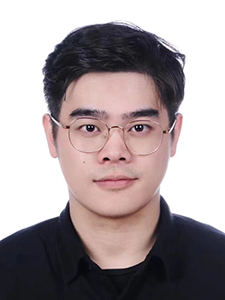Dissertation Title: Structural Health Monitoring Leveraging High Frequency Resonances and Zero Group Velocity Guided Waves
Date: 2025/05/19 – 2025/05/19
Dissertation Title: Structural Health Monitoring Leveraging High Frequency Resonances and Zero Group Velocity Guided Waves
Speaker: Runye Lu, Ph.D. candidate at UM-SJTU Joint Institute
Time: 14:00 PM – 15:30 PM, Monday, May 19, 2025 (Beijing Time)
Location: Room 414A, Longbin Building
Abstract
Structural Health Monitoring (SHM) aims to ensure the safety, reliability, and performance of the structure by providing real-time or schedule-based diagnosis, enabling timely maintenance to prevent failures. SHM technologies utilizing high frequency resonances and guided waves have been pervasively investigated as powerful tools. High frequency resonances possess high sensitivity and detectability to localized damage. Guided waves are capable of long-distance propagation with minimal attenuation and exhibit sensitivity to material property changes, geometric morphology alterations, and damage existences. Nevertheless, confronting diverse monitoring demands, there still exist limitations on current techniques regarding mechanisms, methodologies, and target damage types or materials: (1) vacancy in fluid monitoring; (2) resonance attenuation from damping and viscoelasticity; (3) sensitivity constrain on conventional Electro-Mechanical Impedance Spectroscopy (EMIS); (4) scarce exploration in zero group velocity (ZGV) modes in harmonic analysis and nonlinear ultrasonics.
To address these limitations and challenges, the dissertation encompasses analytical derivation, numerical simulation, and experimental verification to investigate the guided waves-based and resonances-based SHM methodologies. To enrich the mechanism and methodology, this dissertation includes the fluid-structural interaction (FSI), additional resonances, nonlinear ultrasonics, and ZGV modes to enhance the SHM performance. Moreover, to expand detectability across diverse damage types, the dissertation delves into the diagnosis of debonding, fatigue cracks, bolt loosening, industrial fluids, etc.
The dissertation commences with the state-of-the-art SHM technologies, fundamentals of piezoelectrical active wafer sensors (PWAS), guided waves, and resonances. Specifically, to conquer the vibration attenuation of high-damping viscoelastic materials, the dissertation proposes a sub-resonator enhanced EMIS to create additional resonance to enhance resonant signatures. Furthermore, to extend the EMIS application scenarios from solid structures to fluid media, an active PWAS transducer is designed for real-time monitoring of industrial fluid degeneration. Ulteriorly, regarding the methodology enhancement, this dissertation incorporates nonlinear ultrasonics into the EMIS framework, establishing nonlinear electro-mechanical impedance spectroscopy (NEMIS). It can capture both structural resonant information and nonlinear acoustic features. Subsequently, a non-propagating Lamb wave mode, the ZGV mode, is investigated. On one hand, the distinctive trembling features accompanying ZGV resonances are explored and utilized for the extraction of ZGV resonances and structural sensing. On the other hand, the energy concentration triggered by local ZGV resonance is exploited to enhance the nonlinear ultrasonic methods.
Biography

Runye Lu received his bachelor degree in engineering mechanics from Dalian University of Technology in 2020. He is currently a PhD candidate at University of Michigan-Shanghai Jiao Tong University Joint Institute, supervised by Prof. Yanfeng Shen. His research interest includes structural health monitoring leveraging resonances and guided waves.
